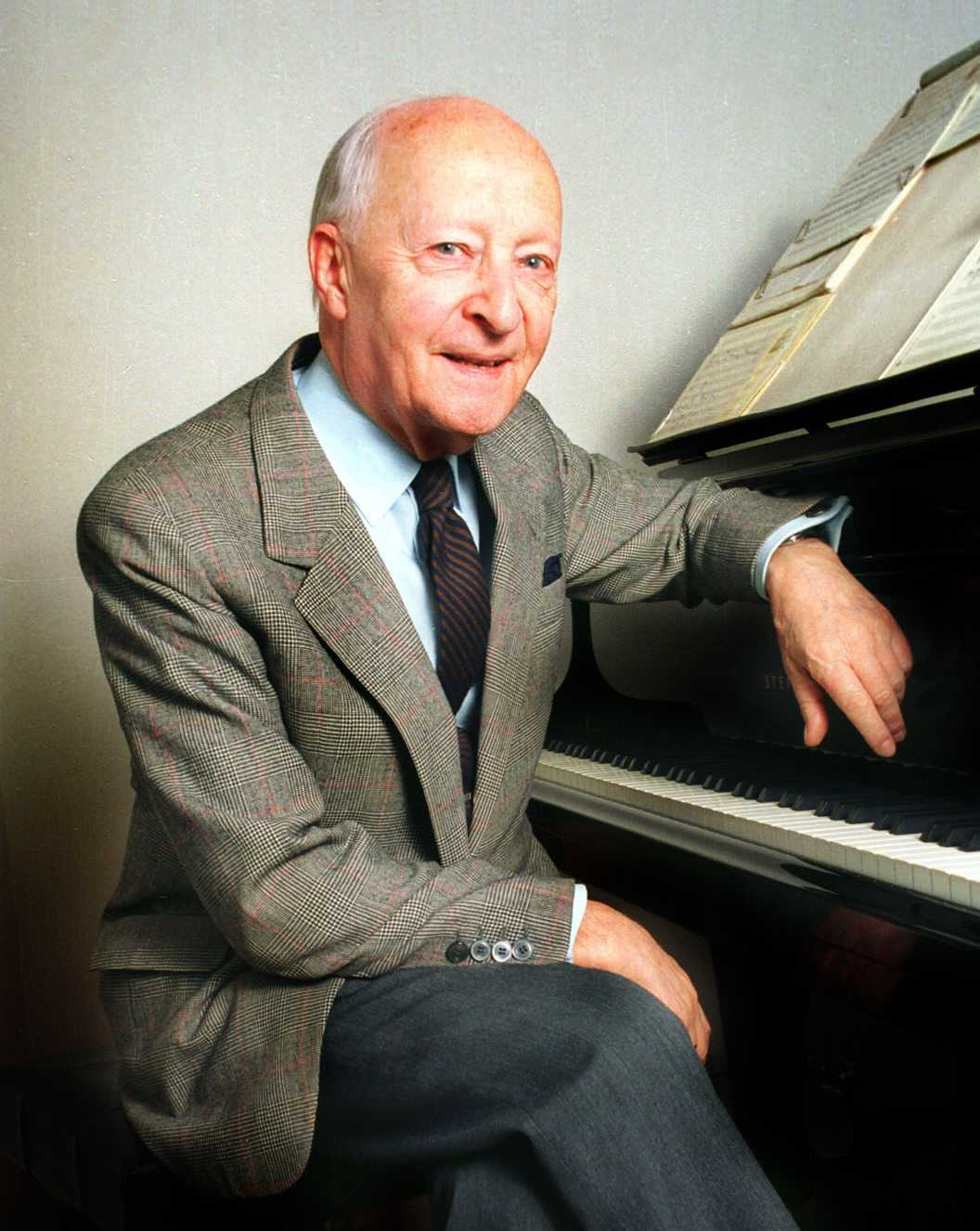Witold Lutosławski
 Witold Roman Lutosławski (; 25 January 1913 – 7 February 1994) was a Polish composer and conductor. Among the major composers of 20th-century classical music, he is "generally regarded as the most significant Polish composer since Szymanowski, and possibly the greatest Polish composer since Chopin". His compositions—of which he was a notable conductor—include representatives of most traditional genres, aside from opera: symphonies, concertos, orchestral song cycles, other orchestral works, and chamber works. Among his best known works are his four symphonies, the Variations on a Theme by Paganini (1941), the Concerto for Orchestra (1954), and his cello concerto (1970).
Witold Roman Lutosławski (; 25 January 1913 – 7 February 1994) was a Polish composer and conductor. Among the major composers of 20th-century classical music, he is "generally regarded as the most significant Polish composer since Szymanowski, and possibly the greatest Polish composer since Chopin". His compositions—of which he was a notable conductor—include representatives of most traditional genres, aside from opera: symphonies, concertos, orchestral song cycles, other orchestral works, and chamber works. Among his best known works are his four symphonies, the Variations on a Theme by Paganini (1941), the Concerto for Orchestra (1954), and his cello concerto (1970).During his youth, Lutosławski studied piano and composition in Warsaw. His early works were influenced by Polish folk music and demonstrated a wide range of rich atmospheric textures. His folk-inspired music includes the Concerto for Orchestra (1954)—which first brought him international renown—and ''Dance Preludes'' (1955), which he described as a "farewell to folklore". From the late 1950s he began developing new, characteristic composition techniques. He introduced limited aleatoric elements, while retaining tight control of his music's material, architecture, and performance. He also evolved his practice of building harmonies from small groups of musical intervals.
During World War II, after narrowly escaping German capture, Lutosławski made a living playing the piano in Warsaw bars. After the war, Stalinist authorities banned his First Symphony for being "formalist": accessible only to an elite. Rejecting anti-formalism as an unjustified retrograde step, Lutosławski resolutely strove to maintain his artistic integrity, providing artistic support to the Solidarity movement throughout the 1980s. He received numerous awards and honours, including the Grawemeyer Award and a Royal Philharmonic Society Gold Medal. In 1994, Lutosławski was awarded Poland's highest honour, the Order of the White Eagle. Provided by Wikipedia
-
1
-
2by Dutilleux, Henri 1916-2013Other Authors: “...Lutosławski, Witold 1913-1994...”
Published 1975
Audio
